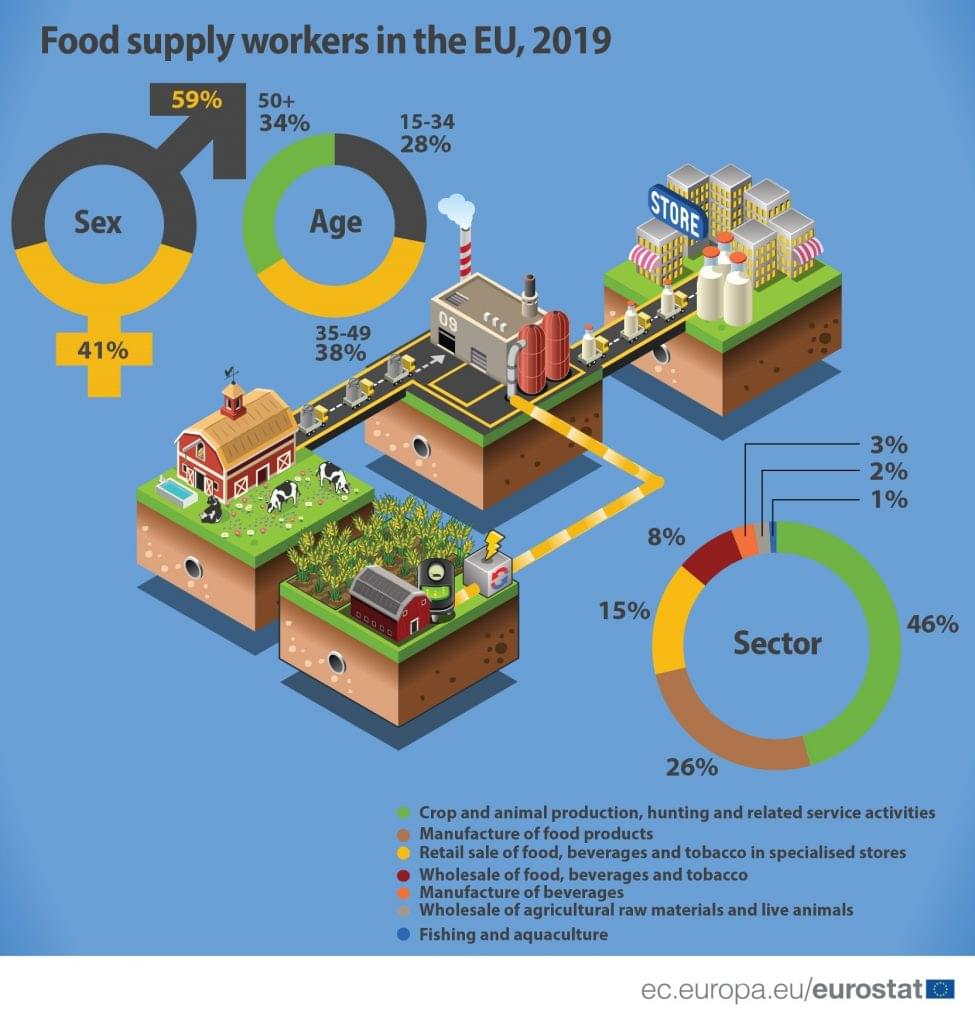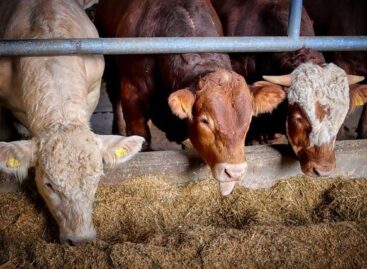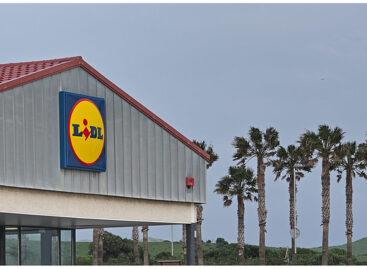Employment in food supply across EU regions
In 2019, 15.9 million people aged over 15 were employed in the food supply sector in the European Union (EU), representing 8% of total employment. Their role is crucial for ensuring the essential needs of households, by keeping supermarket shelves as well as our plates full, during this period of corona crisis.
Almost half of people employed in the food supply sector worked in crop and animal production, hunting and related service activities (46%). Meanwhile, jobs in the manufacture of food products accounted for 26% of employment of this sector, followed by jobs in: retail sale of food, beverages and tobacco in specialised stores (15%), wholesale of food, beverages and tobacco (8%), manufacture of beverages (3%), wholesale of agricultural raw materials and live animals (2%) and fishing and aquaculture (1%). For the purpose of this news item, people employed in bars and restaurants are not included under food supply sector.
The majority of food supply workers were men (59%) although the gender distribution varied with the activities: fishing and aquaculture recorded 88% of men while retail sale of food, beverages and tobacco registered 63% of women. As regards the distribution by age groups, over one-third (38%) of people employed in the food supply sector in the EU were aged 35 to 49, while people aged 50 or above accounted for 34% and those aged 15-34 for 28%.

Related news
Plastic packaging waste in the EU: 35.3kg/capita
🎧 Hallgasd a cikket: Lejátszás Szünet Folytatás Leállítás Nyelv: Auto…
Read more >EU strictness is on its way: BNPL will also be affected by the regulations this year
🎧 Hallgasd a cikket: Lejátszás Szünet Folytatás Leállítás Nyelv: Auto…
Read more >AM: the duration of the wage guarantee subsidy for livestock farmers affected by foot-and-mouth disease is extended
🎧 Hallgasd a cikket: Lejátszás Szünet Folytatás Leállítás Nyelv: Auto…
Read more >Related news
New HR assistant helps K&H employees
🎧 Hallgasd a cikket: Lejátszás Szünet Folytatás Leállítás Nyelv: Auto…
Read more >Lidl To Invest €600m In Spain, Targets 300 Stores In Portugal
🎧 Hallgasd a cikket: Lejátszás Szünet Folytatás Leállítás Nyelv: Auto…
Read more >KSH: industrial producer prices in November 2025 were on average 2.7 percent lower than a year earlier and 0.3 percent lower than the previous month’s prices
🎧 Hallgasd a cikket: Lejátszás Szünet Folytatás Leállítás Nyelv: Auto…
Read more >







